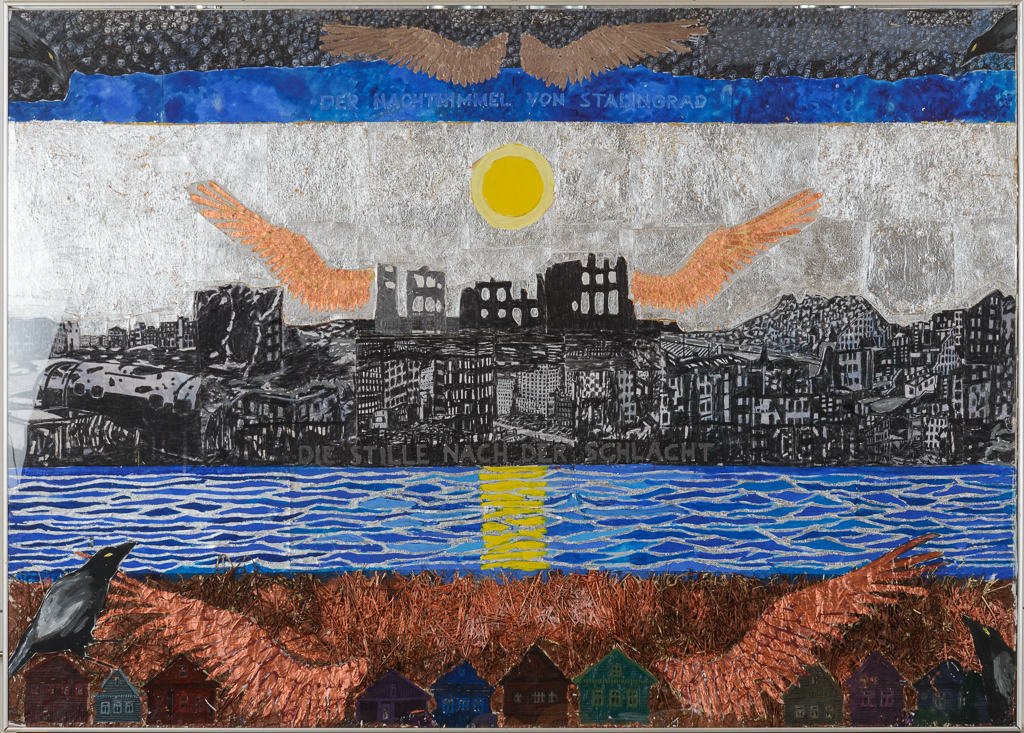.
Stilheden efter slaget • The silence after the battle • Die Stille nach dem Kampf

Akvarel, akryl, blyant, slagmetal (sølv). Papir, karton.
I Stalingrad (i dag Volgograd) fandt et af 2. verdenskrigs største slag sted i 1942-43. Stalingrad lå ved floden Volga og var den trafikale adgang til store russiske oliefelter i øst. Tyskerne tabte slaget om byen og det blev et af krigens vendepunkter. Det skønnes, at 850.000 tyske soldater blev dræbt og mindst 1,2 mio. russere. Russerne sendte soldater ind i byen over floden Volga fra den stort set ubebyggede østbred. Der blev kæmpet i byens center fra ”hus til hus” og fra ”rum til rum”.
Watercolor, acrylic, pencil, imitation silver metal. Paper, carton.
One of the greatest battles of World War II took place in in Stalingrad (now Volgograd) from 1942-43. Stalingrad was located on the river Volga and was the access point for traffic to the large Russian oil fields in the east. The Germans lost the battle for the city and it became one of the turning points in the war. It is estimated that 850,000 German soldiers lost their lives and probably at least 1.2 million Russians. The Russians sent troops into the city across the Volga River from the largely undeveloped east bank. There was fighting in the city center from “house to house” and from “room to room”.
Aquarell, Ackyl, Bleistift, Schlagmetall (Silber). Papier, Karton.